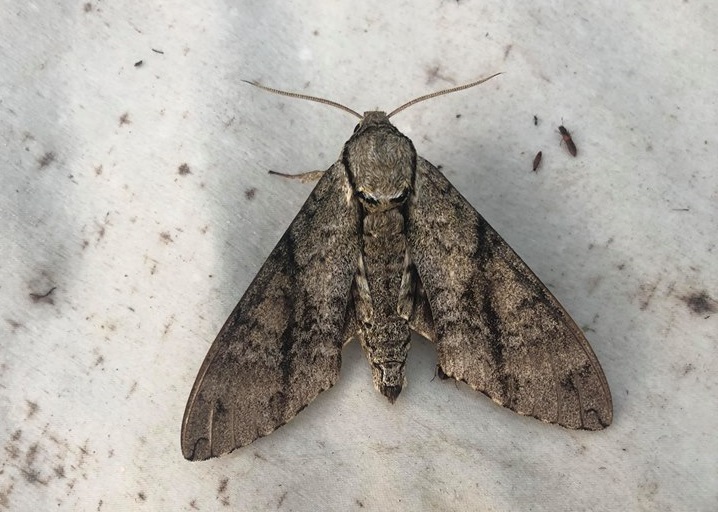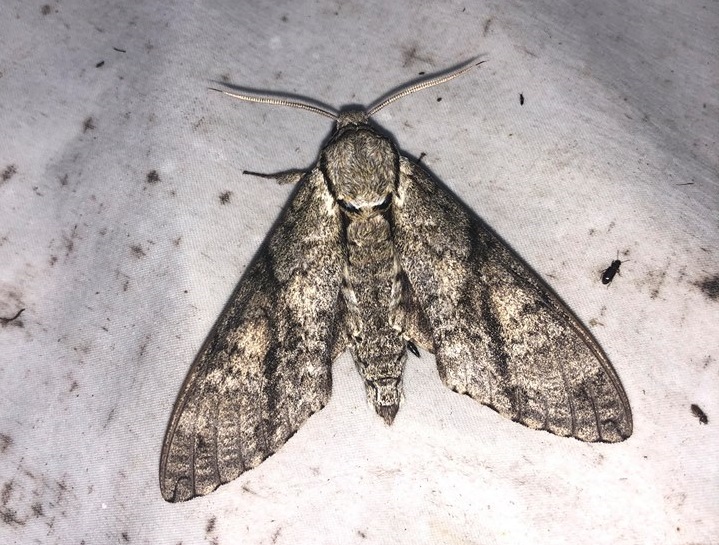ECOLOGY ▪ EDUCATION ▪ ADVOCACY
Manduca: Latin word meaning “chew” or “jaw.”
Jasminearum: Jasminaceae is an Old World synonym for the Oleaceae family, of which this species is a specialist. The term earum is a Latin suffix indicating plural feminine.
man-DOO-kuh Jas-MIN-ee-air-um
This map shows the confirmed sightings of the Ash Sphinx in Indiana. All sightings were confirmed through photographic documentation by individuals who contributed to the Great American IN Nature Lepidoptera Project (GAIN LP).
 |
GAIN LP documented in county. |
| Date | County | Observer | Notes | Image1 | Image2 |
|---|---|---|---|---|---|
| 2018-06-17 | Owen | Malad, Rick | Adult |
 |

|
| Observation Details | Images |
|---|---|
| Date: 2018-06-17 County: Owen Observer: Malad, Rick Notes: Adult |

 |
Reasons: “While it apparently was very scarce in the Northeast in the mid 20th century, it is no longer at all rare in northern New Jersey or Pennsylvania and southward. As with all of the ash feeding Sphingidae for now the rank does not really take into account potential impacts from the Emerald Ash Borer but reflects only current status as of about 2011. If that beetle actually does virtually eradicate ash from eastern North America, which is as of 2011 the plausible worst case scenario, this moth would almost certainly go extinct. This one is not known to have any alternate foodplants although most other ash-feeding Sphingidae can use exotic privets and perhaps native Chionanthus.”
Ash Sphinx caterpillars are specialized feeders on species in the Olive (Oleaceae) family. Known hosts plants in Indiana are native Ash (Fraxinus spp.) as well as the exotic Lilacs (Syringa spp.).
Adult moths feed on nectar.
| Known Larval Food Sources in Indiana | ||
| Family | Taxonomic Name | Common Name |
|---|---|---|
| Order: Lamiales | ||
| Oleaceae | Fraxinus spp. | ashes |
| Syringa spp. | lilacs | |